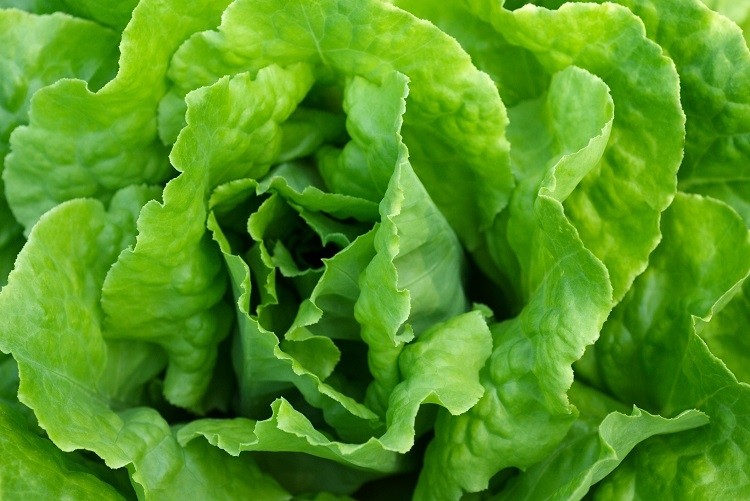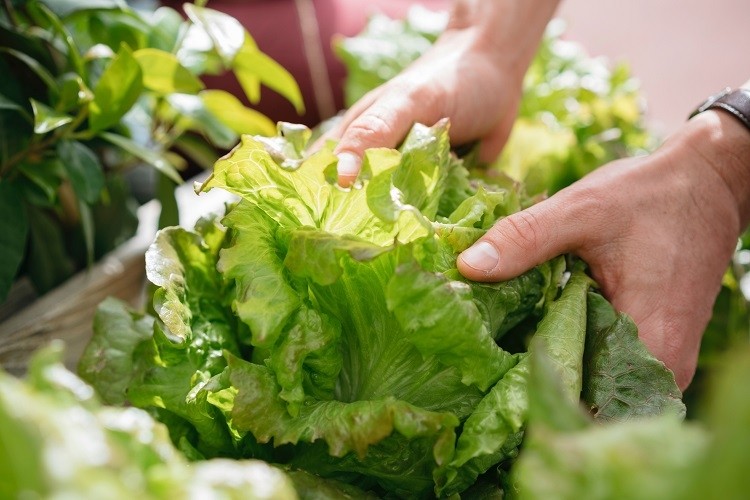Nutritionally charged lettuce developed with CRISPR/Cas gene editing tech

The concept of genetic modification is polarising. While some believe both traditional and new plant breeding techniques are unnatural and unsafe, others see potential in the latter enabling greater yields to feed growing populations.
Yarin Livneh, a PhD student at the Hebrew University in Israel under the supervision of Professor Alexander Vainstein, falls into the second camp: she backs new plant breeding techniques – otherwise known as gene editing – to help overcome global challenges.
“I am a great enthusiast when it comes to the applications of plant genome modifications,” she explained. “I believe a lot of the challenges our world is facing today – such as climate change, malnutrition, pollution, and disease risk – could be tackled with the aid of genetically improved research.”
Livneh’s most recent research is leveraging gene editing technology CRISPR/Cas to do exactly this, we were told: to improve the nutritional quality of an agricultural crop.
“Not only could the fruits of my labour be commercialised as a healthier vegetable – think more nutritious hamburgers, for example – but the knowledge and experience I’ve accumulated in the process could serve me in the future to tackle even more important goals.”
Supercharged lettuce
The vegetable in question is the humble lettuce. Lettuce plants naturally produce a range of nutrients, such as vitamin C, beta-carotene, and thiamine (vitamin B). However, the plant only produces a limited amount of each – only the amount required for the lettuce itself.
In Livneh’s research, she leveraged CRISPR/Cas technology to target areas in the native lettuce genes that regulate the production and accumulation of these specific nutrients.
“By slightly altering the regulatory components, I can trick the lettuce plants into producing or accumulating more of them, for the benefit of the consumer,” she told FoodNavigator.
The genetic changes are ‘very subtle', the researcher continued, and are considered ‘gene editing’ rather than genetic engineering – whereby whole genes are usually cloned from other species into the target plant.
“I am editing existing genes in a way that could spontaneously occur in nature or when using traditional breeding methods.”
The European Food Safety Authority (EFSA) recommends adults consume around 80mg of vitamin C per day. To meet these demands, adults would have to consume about 16 cups of regular lettuce, explained Livneh.
The recommended daily allowance of vitamin C, however, can be achieved with just two cups of the researcher’s shredded nutritionally-enhanced lettuce.
Research challenges
The research project was not without its challenges. A common issue in gene editing plants lies in delivering CRISPR/Cas machinery into the plant efficiently.
“In order to do that, I utilised a delivery method based on a viral vector that usually infects plants and delivers its genetic material into them,” Livneh explained. “This method is relatively unique and was originally developed in our lab where it is used for other plant species as well.”

Another challenge faced by the researchers was how to quantify the nutrients of the improved lettuce.
“Our lab is mostly a molecular biology lab and our expertise is the use of molecular biology tools; therefore I am collaborating with several other labs that focus on specific metabolite analysis,” we were told.
Commercialisation potential?
In Europe, the cultivation of gene edited crops is largely prohibited. Regulation is similarly ‘tight’ in Israel, due to the market’s trade ties in Europe, yet consumers themselves are less concerned by the technology itself, the researcher explained.
“In terms of research, we are at the forefront of genetic research and application. The GMO debate is largely disregarded by the public, but still regulation here is tight because a lot of the produce grown here is exported to Europe.”
Further, as a majority of Israeli start-ups seek commercialisation in larger, global markets – such as Member States in Europe – they must keep international GMO regulations in mind. “Therefore, sadly, there is little interest in changing the current status quo.”

Livneh does, however, see commercial potential for her nutritionally-enhanced lettuce, as well as other nutritionally-enhanced vegetables.
“I have already received several enquiries from local lettuce growers and sellers eager to grow and sell the product,” she told this publication. “They are not deterred by the fact that the lettuce is genetically modified, but are unfortunately mostly unfamiliar with regulation and don’t know the process required for approval.”
The researcher remains ‘very’ optimistic for commercialisation potential in global markets. The UK, which withdrew from the European Union in early 2020, has recently approved field studies for genetically edited crops, for example. And recently, a CRISPR-edited, nutrient-enhanced tomato entered the Japanese food market.
This suggests it is not the US alone that is embracing gene-edited crops, stressed Livneh: “I think this trend will continue.”






















